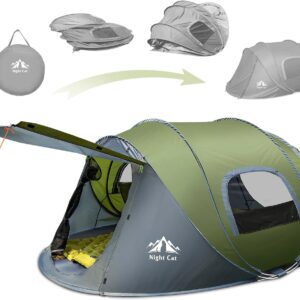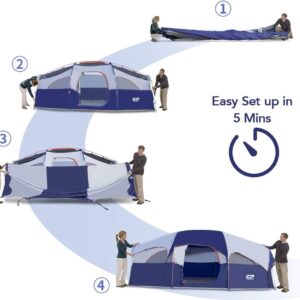Price: $16.95 - $12.87
(as of Oct 11, 2024 08:09:32 UTC – Details)
Knots for Kids delivers relevant, expertly curated content perfect for kids. Outdoor skills expert and veteran author Buck Tilton provides readers with accessible information on choosing the best knot for the situation, tying different types of common knots and hitches, selecting the best kinds of rope, and much more. With step-by-step instructions (for both righties and lefties!) on tying the most used and useful knots, this is the perfect book to teach children how to tie knots like the experts.
From the Publisher




Welcome to the World of Knots
If you start with the first knot in this book and work your way through to the last knot, you will learn how to tie a lot. Do you need to know all those knots? Nope. You can do just about everything you need to do with knots if you know six really important ones. Really important knots are called basic knots in this book. But even if you don’t need to know a lot of them, knots are fun and often useful. And fun and useful are good!


Knots used to hold everything together that needed to be held together. Long before there were hammers and nails, glue, duct tape, or Velcro, there was cordage—and the knots that made it useful. How many knots are there? Well, today that number is greater than 4,000! If you love tying knots, you may be just starting on a long, wonderful journey into the world of knots.
Knots, Knots, and More Knots!






Alpine Butterfly
This knot creates a fixed loop (a loop that will not move). You can tie it at any place in a rope. It’s a loop you can clip or tie just about anything to, including a person. It is especially popular in glacier travel, where it’s common to find three climbers attached to one rope, one climber at each end and one in the middle. The alpine butterfly will safely hold up with a lot of weight attached.
Bowline on a Bight
Bowline on a bight, bowline in the bight, bowline upon the bight—they are all names for the same knot. This knot can be tied near a working end of a rope but more often appears away from an end. In the old days, this knot was used as an improvised seat. Because devices such as harnesses now exist to aid in moving a person with a rope, the bowline on a bight is not recommended for such use except in emergencies. You can use it to tie gear to the middle of a rope.
Constrictor Knot
This is a really great knot when you want the knot to just about never come untied. Once you pull this knot really tight, it can refuse to come undone. When fully tightened, it might be easier to cut it off than untie it. When you want this knot to keep doing its job for a long time, the rope or cord can be trimmed off short on both sides of the knot.






Fisherman’s Knot
You don’t have to be a fisherman to use this knot. But because it works very well in lines of very small diameter, such as fishing line, it is popular with people who fish. That’s why it’s called a fisherman’s knot, as you probably guessed.
Garda Knot
The Garda knot ratchets, which means the rope can pass through a pair of carabiners in one direction only. The two carabiners should be the same size and shape, and they should not be locking carabiners, because the locks prevent them from pinching the rope firmly enough for the knot to work.
Monkey’s Fist
If you use your imagination, the monkey’s fist does resemble a fist—sort of. It’s probably the most famous decorative knot. It was probably developed by sailors who needed a heavy heaving line knot and who sometimes tied it around a stone or iron ball to add weight. The knot can be tied around a rubber ball if you want the knot to float.
Publisher : Falcon Guides; First Edition (June 1, 2022)
Language : English
Paperback : 136 pages
ISBN-10 : 1493059912
ISBN-13 : 978-1493059911
Reading age : 8 – 12 years
Grade level : Preschool – 12
Item Weight : 2.31 pounds
Dimensions : 7.58 x 0.3 x 9.27 inches



















Reviews
There are no reviews yet.